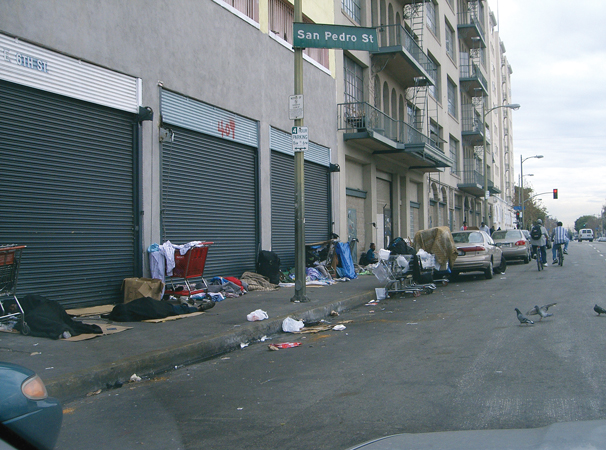The Business Journal ended last year with a commentary that called for a new sense of dedication in three areas of civic life that intersect with our economy and community of business in fundamental ways: Housing, public safety, and homelessness … This week’s commentary, which you’ll find on page 36, follows up on a somewhat puzzling aspect of the local housing market and the role of our state’s regulators there … I’ll use this space, meanwhile, to turn again to homelessness – a re-emphasis prompted by the timing and utility of a story that’s on page 9 and leads into this week’s list of Business Improvement Districts (pages 10 and 11). The reporting by our Howard Fine puts the effects of homelessness on the community of business in stark relief… There’s no end to the indirect or intangible costs that homelessness incurs – the damper that sidewalk encampments put on tourist areas, for example, or the opportunities lost to homeless individuals and the enterprises that might employ them in some useful capacity if circumstances were different … Our list and attendant story, however, point up an increasingly direct and clear connection between rising numbers of homeless folks and rising financial costs to Business Improvement Districts, which generally assess property owners an extra tax to pay for security and cleanup operations to fill gaps on municipal services … BIDs are now facing bigger gaps because of homeless encampments, whose residents often have few options other than the street when it comes to disposing of their daily detritus. BIDs in the downtown area have been particularly hard hit … How hard? Our story on BIDs refers to homelessness downtown as “massive,” a term that requires some substantiation anytime it appears in our pages. So we drilled down, and that prompted us to do some research that leads to some surprising context. We offer it up in hopes of pushing the discussion beyond the typical grind of politico-bureaucratic problem-managing that threatens to swallow whatever momentum has come with a near society-wide consensus that it’s time to think big and act in earnest on homelessness in Los Angeles County … Here’s the figuring, based on sources ranging from the Greater Los Angeles Homeless Count to the Downtown Center BID to CoreLogic, along with good, old-fashioned walks through the territory: There are probably somewhere between 58,000 and 68,000 regularly sheltered residents of downtown these days – folks who own quarters or rent them on some regular basis. There are likely 8,000 to 12,000 homeless folks on the streets of downtown at any given time … That means – in the most favorable view, if such a term can be applied – that about 10 percent of downtown’s population is homeless … Massive? … Recall the Mortgage Meltdown of the Great Recession. Was that a massive problem? You bet …What was the actual foreclosure rate at its nadir? About 3.6 percent nationwide … Now consider that downtown’s homeless rate is about three times the foreclosure rate at the worst point of the Great Recession, when various segments of society with some say and sway offered massive responses ranging from hundreds of billions of dollars’ worth of extensions on unemployment benefits to federal guarantees on hundreds of billions of dollars more worth of subprime mortgages … What are we doing – 10 years later – about the massive problem of homelessness in the heart of Los Angeles? Voters in the City of Los Angeles went to the polls in 2016 and volunteered to hike property taxes in order to raise $1.2 billion for the construction of housing units for the homeless … Voters countywide agreed just a few months later to increase the local sales tax by a quarter point, a move that is expected to raise about $3.5 billion over 10 years, with the money earmarked for services for the homeless, including mental health treatment, substance abuse treatment, health care services, job training and transportation … And what has that gotten us so far? … Sullivan Says: It’s time to ask your elected officials that question.

